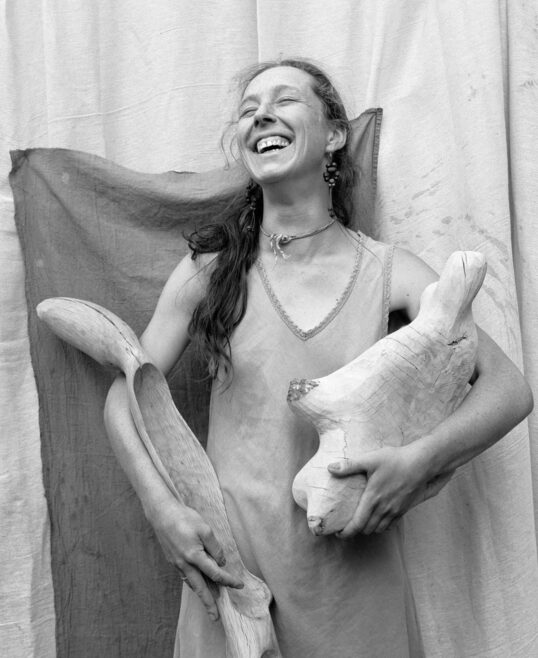
Introducing our first ever artist in residence blog series, a three-part journey of storytelling, inspiration and reconnection to nature and each other. In December we were so pleased to welcome the wonderful Maya Ronchetti into the Cabilla fold and be part of her artistic process, combining the simplicity and beauty of nature with pure expressive human intention. In the first instalment, we explore Maya’s background, sources of influence and the connection to Cabilla.
Education and background
Maya Ronchetti grew up in the midlands, starting her education with a diploma in fashion and textiles in Leamington Spa, before studying Fine Art at Falmouth University in 2016. Maya spent time developing her skills in metal, wood and casting workshops throughout her degree but found her greatest inspiration during her semester abroad which influences much of the way she works with materials today.
“Having always had a close relationship to nature and fascination with cultures other than my own, I chose to study woodwork, physics and Indigenous cinema at Emily Carr University in Vancouver. My brain was worked so hard during this time, especially on the course Indigenous Cinema where I studied alongside native Canadians as the only non-indigenous student. Here I began the heart and mind opening journey of decolonising my mindset and way of being. I joined indigenous talking circles, learnt some native crafts, visited sacred burial sites, museums and learned of the deep wounds and destruction of Native communities and cultures around the world.”
Maya felt an obligation to share her insight into colonialism, a difficult but important undertaking. She began by learning the language of the land around her in the UK to inspire a way of thinking that echoed similar teachings to those she was exposed to in Canada. Therefore, the opportunity to work directly with wood carved by beavers, being a native and ancient species in Britain, was an exciting prospect: “I seek opportunities to share traditional & local knowledge similar to indigenous practices that have been torn from communities all over the world including here in Britain. To bring the lost soul and disconnected body back to its wild place.”
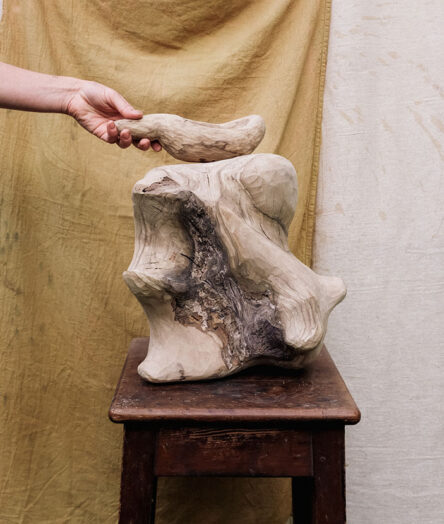
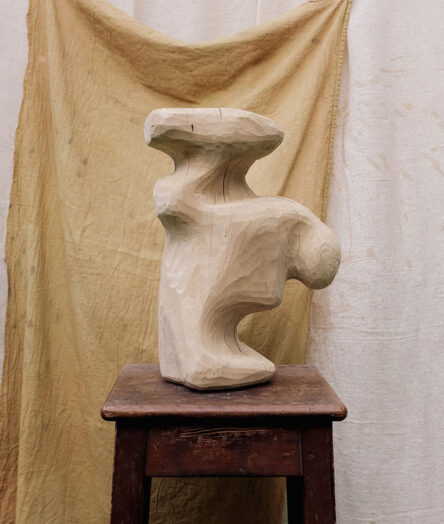
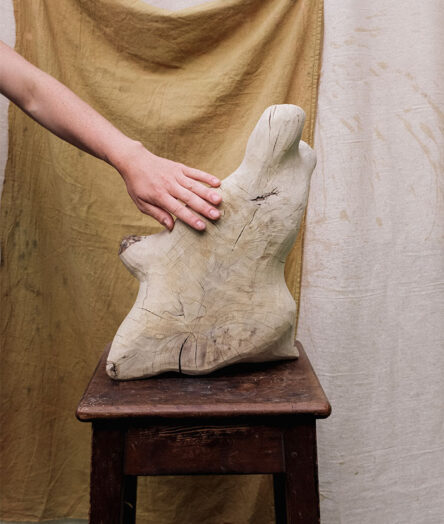
Inspiration and creation
Maya’s experience in Canada reading into holistic wisdom, traditional crafts and different ways of living with nature became a very important part of her work. Books about traditional ways of building a home and what goes into it such as Shelter by Lloyd Khan was such a rich source of inspiration. “I recently discovered the book Lo-TEK: Design by Radical Indigenism by Julia Watson which covers inventive and ancient ways indigenous communities work in harmony with natural cycles to sustain their livelihoods and traditions. And I’ve been reading the book ‘Women That Run With Wolves’ for almost a year now and it’s kind of like a bible to me; exploring the hidden messages of folklore from different countries and peoples.”
Maya goes on to say: “I find it difficult to decipher between art and life. As cheesy as that sounds, the way I live my life and spend my time directly influences my art practice and vise-versa. For example, straight after university, I set up a nine person artist community in a derelict mansion in Camborne. Everything had texture, objects had stories, history, the building was alive; revealing history in wallpaper, scary scratches, creeks and tales told by neighbours. The architecture was crumbling and evolving daily as we sat around the dinner table or closed a door. Living with so many creatives while sometimes living without the essentials like light or hot water came with new inspirations and hilarious memories.”
Passion and development
Maya has always been drawn to ceramics for its malleable and tactile nature, but even more so drawn to wood as a material due to its texture, warmth and comforting energy. Finding a way to work with tools and wood led her to a development of her own style giving a feeling of working with the earth. Using chisels, knives and an angle grinder, she creates fluid shapes, much like if she was moulding the wood with her own hands, but the results are immediate and have a warmer finish: “Intuition can take me all the way through the process with little stopping and starting, I think this is why it’s so magical for me as the maker. My passion for wood began in fairytales as a child but cemented when I was in Canada and visited the Museum of Anthropology in UBC, Vancouver. The museum showcases the most incredible work by indigenous artists who wove and still weave their spiritual beliefs into their craft. Spirit, the land, making and living blurring into one and the same thing. The totems and wood carvings blew me away, they were so raw and seemed to carry a presence as if they were living and breathing in front of my eyes.”
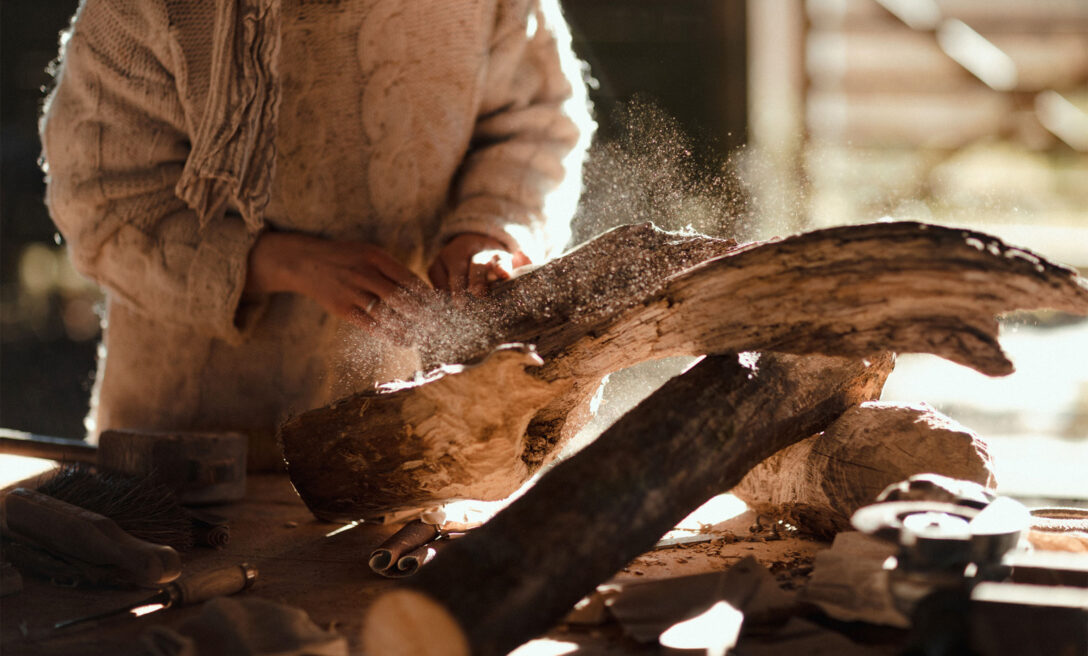
Influences and impact
Defining the influences of Maya’s work is somewhat complex, as her work is often influenced by so many things. Often it’s medieval and celtic imagery and folklore which sparks her imagination. Folklore being a classic way that humans all over the world pass on wisdom and connection to the land, as well as the magic and transportative ability of folktales and creation stories. Maya adds “They always have some juicy hidden nuggets of wisdom to share and mythical creatures in them whose bodies fuse with natural elements like a mountain, river or tree. I seek these inspirations through physical visits and talking with knowledgeable people as much as possible.”
Maya also finds inspiration in travel, places, people and things which have a mysterious or magical energy about them which drives her to create, which is why Cabilla feels like such a focus for her. “From temples and churches, to elderly or curious people on the train, a stone or piece of rusty metal on the floor, discovering a new alleyway you never knew was there, old books, puppet shows, feathers, ancient ruins, abandoned buildings, scientific research or religious gods and teachings are where it’s at.”
More recently, spending time at Cabilla has unearthed a new found appreciation for the life of a beaver, which has been at the forefront of guiding her new work. In terms of artists or makers, she has been drawn to the work of Atelier Brancusi, Antoni Tapies, J B Blunk and Sasa Works. Predominantly for their connection to nature, creation of bulky and beautiful organic forms and confidence with texture.
“They always have some juicy hidden nuggets of wisdom to share and mythical creatures in them whose bodies fuse with natural elements like a mountain, river or tree”
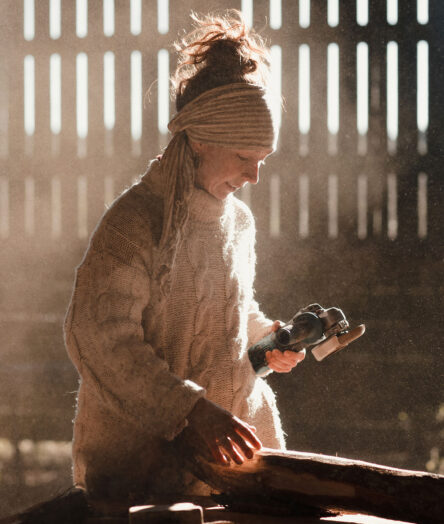
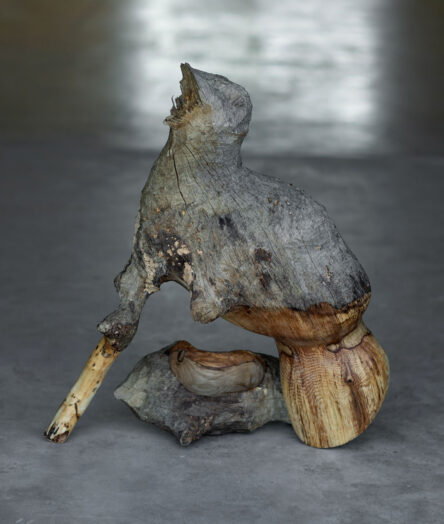
Why Cabilla?
Talking about her recent experiences and Cabilla, Maya said: “I heard about Cabilla through some friends and just knew I had to go. I have been seeking an opportunity to properly bring biophilia into my practice and display my work somewhere that would resonate with the idea of art as a medicine for a while. Cabilla is an incredible and rare place where science, nature, well-being and now art, come together. As a place it is bustling with restoration initiatives, scientific research, gorgeous retreats, incredible cooks, foragers and various visitors like university volunteers and photographers everyday. It is a soup of things that all feed my work so I feel blessed to be working on the sculptures here so close to an amazing animal.”
Maya goes on to say: “On arrival to Cabilla and all the days of my residency, I felt thoroughly cared for, treated with total respect and kindness and valued for what I am doing. It is a magical place to create and learn first hand about my immediate landscape, swim in the river, observe the beavers, sketch trees and spend a lot of time in the woods. There is something about this place that feels like a portal. A whirlpool into another world when you bounce on the dense mycelial networks under foot, come face to face with deer at night, observe the glittery skies above and sleep under the lullaby of rain and owls. My senses are rife but my mind is peaceful. I feel more myself than I have for a long time and I think this is the experience most people have when visiting here.”
New work
Maya was immediately attracted to the forms and shapes created by the beavers at Cabilla: “Their striking teeth marks in fresh wood stood out so much as I walked through their enclosure. Around the river, their sculptures hang like ghostly traces of some serious jaw activity. However, their sculptures are made out of complete necessity, intuition and are part of a circular process: they eat the wood, fell the trees, use the felled trees to build their dams to make pools outside their riverbank lodges for protection from predators. In the meantime, their activity increases biodiversity and is a benefit to the ecosystem of the woodland in various other ways. Beavers have been doing this for millions of years so it is hugely undermining to argue otherwise.”
Maya continues: “I was really inspired when I began considering beavers as the first woodcarvers, beavers are the origin of the chisel, the wisdom keepers of woodland management, the first whittlers and architects. It is a rare opportunity for a sculptor who works with wood to collaborate and learn from the ancestors of sustainable woodland living and tree carving. I love working with traditional crafts and building my knowledge of living off the land. Looking to the beavers for inspiration feels a step closer to the origins of the way we build our houses, live within an ecosystem, and create from the materials on our doorstep.”
You can find out more about Maya Ronchetti and her work here or you can follow her on instagram @first.temples.